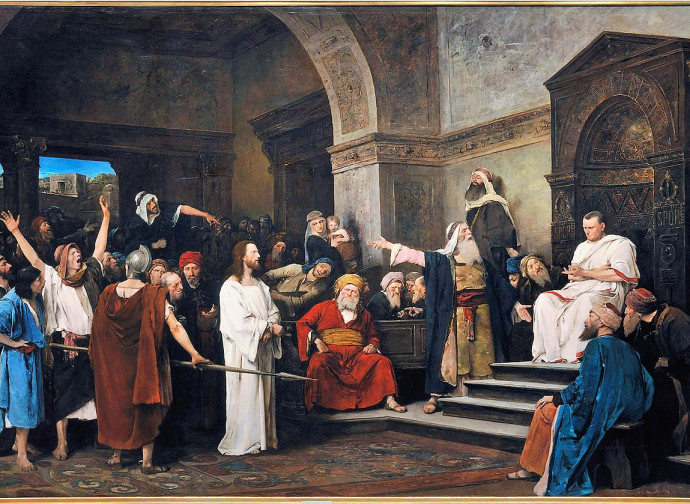Who, why and how they wanted to put Jesus to death
Starting from today, Ash Wednesday, our Lenten journey begins. This year we intend to follow it through the comments of Father Cornelio a Lapide (1567-1637) on the Passion according to the Gospel of Saint Matthew. It begins with the decision of the priests to put Jesus to death.

We are publishing a Lenten series on the Passion of Jesus. The first of the series is a text taken from the Commentary on the Gospels by Father Cornelius a Lapide (1567-1637), a Jesuit and Flemish exegete. This religious is known for having written extensive commentaries on all the books of the Holy Scriptures, with the exception of the Psalms and the Book of Job: his project was interrupted only by his death. Through his work, Cornelio a Lapide set out to offer the allegorical, anagogical and tropological meaning of the Holy Bible, with the main intention of providing support to preachers. His commentaries are also precious because they contain numerous quotations from the Fathers of the Church and other later exegetes (Father Konrad zu Löwenstein).
-----------------------------
The Passion of Christ
from the Commentary of Cornelius a Lapide on the Gospel according to St. Matthew, ch. 27
1. The Jews Plan to have Christ put to Death
Verse 1. But when the morning was come …(all the chief priests, &c. “See here,” says St. Jerome, “the eagerness of the Priests for evil,” their feet were swift to shed blood (Ps. xiv. 6). They were urged on by their bitter hatred of Christ, and by Satan’s instigation. It was the morning of Friday, only a few hours before His crucifixion, when Caiaphas, who had already tried and condemned Him the night before, summoned thus early the great Council of the Sanhedrin. It was to obtain His condemnation by the whole Body, which would ensure the subsequent condemnation by Pilate….St. Leo says strikingly, “This morning, 0 Jews, destroyed your Temple and altars, took away from you the Law and the Prophets, deprived you of your kingdom and priesthood, and turned all your feasts into unending woe” (Serm. iii. de Pass.).
To put Him to death. That is, how they could do it without hindrance or tumult, and also by what kind of death, as, e.g., that of the Cross, the most ignominious of all. ….
And when they had bound Him, they led Him away, and delivered Him to Pontius Pilate the governor. “For,” as St. Jerome says, “it was the Jewish custom to bind and deliver to the judge those they had condemned to death.” …For Jesus was bound that He might set us free by taking on Himself the bonds and the punishment of our sins.
They delivered Him. Caiaphas, i.e., and all the other members of the Council, to crush by the weight of their authority both Jesus and Pilate alike. For if Pilate refused to ratify their sentence, they would be able to accuse him of aiming at the sovereignty of Judæa, and being thus an enemy of Cæsar, and so force him in this way, even against his will, to condemn Him to death.
They delivered Him to Pontius Pilate. …Why?
1) Because the Romans had taken away from the Jews the power of life and death.
2) To remove from themselves the discredit of His death, as though it had arisen merely from envy.
3) To dishonour Him as much as they could, by getting Him condemned by Pilate to the ignominious death of crucifixion, the punishment of rebels.
4) To dishonour Him the more by causing Him to be put to death as a profane person, by one, too, who was himself profaning the holy feast of the Passover
But a retaliatory punishment was inflicted on the Jews; for as they delivered up Christ to Pilate, so were they in turn delivered up to be destroyed by Titus and Vespasian (S. Cyril on John, cap. xviii.; Theophylact, and Victorinus on Mark xiv.).




